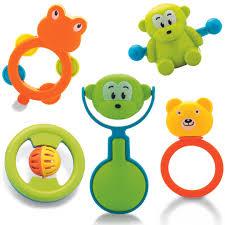Notifications

7 minutes, 16 seconds
-12 Views 0 Comments 0 Likes 0 Reviews

Two-year-olds are bursting with curiosity, energy, and emotion. At this age, toddlers are walking, talking (a lot!), and developing a strong sense of independence. They’re not just playing anymore — they’re learning about their world, practicing social interactions, and flexing their cognitive muscles. That’s why choosing the right toys for 2 year olds can have a big impact on their growth.
Unlike the passive toys of infancy, toys for toddlers should challenge, inspire, and support their expanding skills. From imaginative role-play to fine motor activities, the best toys for this age group help foster creativity, physical coordination, and early problem-solving — all while keeping your little one joyfully engaged.
Let’s explore what makes a toy perfect for a 2-year-old and highlight some of the best types to consider.
By the age of 2, children are undergoing a remarkable transformation. They’re forming simple sentences, running and climbing, playing alongside (and sometimes with) peers, and starting to assert preferences. Their toys should:
Encourage independence
Support active play
Promote creativity and imagination
Introduce basic problem-solving
Develop hand-eye coordination
Support early social-emotional learning
These goals don’t require fancy or expensive items — just thoughtful choices that match their developmental stage.
Toys like large blocks or stackable cups are timeless for a reason. They enhance spatial awareness, problem-solving, and motor coordination. They also give toddlers the chance to create something — then knock it down for fun!
Recommended: Wooden blocks, Mega Bloks, stacking rings, and nesting cups.
Pretend play is in full swing by age 2. Whether it’s cooking in a toy kitchen, playing doctor, or caring for a baby doll, these activities help children process their experiences and build empathy.
Recommended: Toy kitchen sets, tool benches, doctor kits, or plush dolls with accessories.
At this age, gross motor skills are rapidly developing. Ride-on toys help strengthen leg muscles and improve balance. Make sure the toy is safe, stable, and appropriate for indoor or outdoor use.
Recommended: Push bikes, scooters with three wheels, or foot-powered cars.
Crayons, markers, coloring books, and play dough invite creativity and fine motor development. Kids at this age love expressing themselves visually and tactilely.
Recommended: Jumbo crayons, finger paints, washable markers, and safe modeling clay.
Whether it's a xylophone, mini drum, or tambourine, musical toys allow kids to explore sound, rhythm, and cause-and-effect. Bonus: they can burn off extra energy while dancing to their own tunes.
Recommended: Toy keyboards, egg shakers, drums, and sing-along microphones.
At 2 years old, children start to enjoy longer stories and more interaction. Books with flaps, textures, or sound buttons keep them engaged and build early literacy skills.
Recommended: Touch-and-feel books, sound books, or lift-the-flap storybooks.
Safety is key when choosing toys for any age group, but especially toddlers who are still exploring the world with their mouths.
Avoid small parts that could pose a choking hazard.
Check durability — 2-year-olds are rough with their toys.
Choose non-toxic materials, especially for anything going in their mouth.
Read age labels to ensure toys meet safety and developmental needs.
Play is not a break from learning — it is learning. Whether your child is banging blocks together or pretending to drive a bus, they’re discovering how the world works, how they can influence it, and how to relate to others.
Interactive play with a caregiver also strengthens emotional bonds. Try joining your child in their world — build a tower together, host a pretend tea party, or sing along with their favorite musical toy.
While it’s common to see toys marketed as “for boys” or “for girls,” experts recommend giving your child access to a variety of play experiences. Let your son rock a baby doll. Let your daughter build a tall tower. Play is about expression, not limitations.
Though some tech toys and apps claim to be educational, it’s still best to prioritize hands-on, screen-free toys for 2-year-olds. Tactile experiences are far more effective for developing cognitive and motor skills than passive screen time.
By age 2, children are learning to play solo for short periods. Having a rotation of engaging, open-ended toys encourages independent exploration. Set up a safe play space and rotate toys weekly to keep things fresh.
Some of the best toys are those that evolve with your child. A set of blocks, for example, may begin as a simple stacking game and turn into elaborate towers or cities by age 3 or 4. Think long-term when investing in quality items that support different stages of development.
Just as toys for newborn to 6 months focus on sensory exploration and soothing textures, toys for 2-year-olds open the door to a new world of imagination, independence, and discovery. At this age, your child is eager to understand how things work, mimic adult behaviors, and explore their surroundings with all their senses.

